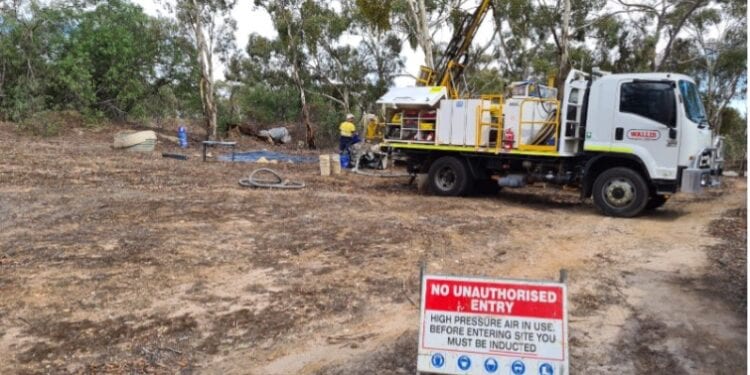5,000 AC Programme Testing Potential Growth Assets In Victoria
Victorian-focused gold exploration company, Navarre Minerals Limited (ASX: NML), has commenced air-core (AC) drilling at its 100%-owned St Arnaud Gold Project, 240 km northwest of Melbourne.
Managing Director, Ian Holland, said the 5,000m reconnaissance drilling programme is part of a 20,000m campaign to test several of Navarre’s regional growth assets and is additional to the current 2,000 metre diamond core drilling program,e testing for high- grade gold beneath the historic New Bendigo Mine.
The drilling will focus on testing beneath shallow gold workings within a recently granted exploration licence, EL 6819 which covers most of the historical mines of the old St Arnaud Goldfield, which produced 400,000 ounces of gold between 1855 and 1916. These historical workings include the gold-bearing Bristol (New Bendigo), New Chum and Nelson lines of reef.
In addition, Navarre plans to drill on its adjacent exploration licence, EL 6556 where the company previously identified gold and silver mineralisation extending for at least five kilometres north of the St Arnaud Goldfield under shallow Murray Basin cover.
According to the Victorian Government’s ‘Gold Undercover’ initiative, a potential 38 million ounces of gold could lie undiscovered in the Stawell Zone north of the St Arnaud Goldfield.
“We are excited to be drilling beneath the historic shallow workings of the St Arnaud Goldfield with three drilling rigs,” Mr Holland said.
“St Arnaud is the second largest hard-rock goldfield in Victoria’s Stawell Geological Zone which, until now, has missed out on Victoria’s gold resurgence.”
“We look forward to sharing with you potentially strong news-flow over the coming months from this premier mineral property.”
Alluvial gold was first discovered at St Arnaud in 1855 and was quickly traced to its source in outcropping quartz reefs. By 1860, 47 hard rock mines were in operation. From 1855 to 1916, approximately 400,000 ounces of gold were produced at a recovered grade of over 15 grams per tonne of gold from the hard rock mines.
The St Arnaud Goldfield consists of several lines of reefs which were worked to the southern edge of the Murray Basin cover. These reef trends are known as the West Field, New Bendigo (Bristol), Nelson (including New Chum line), Little Boulder and East Field.
The Nelson line produced the most gold and was worked over a strike length of approximately five kilometres to a maximum depth of 685 metres in the goldfields deepest mine, the Lord Nelson Mine.
The Lord Nelson Mine was the only mine to produce gold from sulphide ores below a depth of 120m with records showing a total of 323,000 recovered ounces (80% of total goldfield production).
Most other mines closed on reaching the water table because the technology was not available to economically treat the sulphide ores in addition to the added cost of pumping mine water.
The Lord Nelson Mine demonstrates the prospectivity of the area in terms of vertical continuity of auriferous reef systems. Ten steep west dipping auriferous quartz reefs of up to 7.5m width were worked between 1864 and 1916. Historically, silver was a common occurrence with gold mineralisation in the St Arnaud Goldfield.
In 2018, Navarre’s maiden reconnaissance drilling program demonstrated the potential for economic mineralisation of the St Arnaud Goldfield to extend under shallow Murray Basin cover more than five kilometres beyond the limits of historic workings (refer ASX release on 30 July 2018). This mineralisation remains open along strike and will be the subject of follow-up drilling. The best gold result was 4m @ 6.6 g/t Au from 48m (SAC022) and the best silver result was 1m @ 67.4 g/t Ag from 50m (SAC055).











